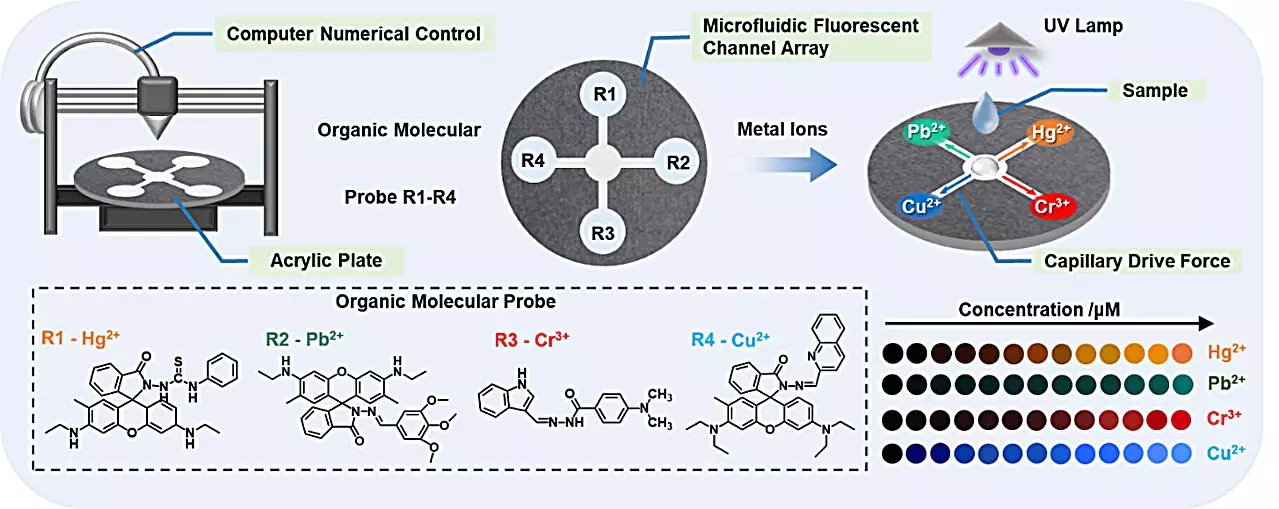The persistent threat of heavy metal contamination in water sources poses a grave risk to both human health and environmental ecosystems. Fortunately, groundbreaking advancements in technology are stepping up to tackle this challenge. A recent study from the Hefei Institutes of Physical Science, affiliated with the Chinese Academy of Sciences, unveils an ingenious solution: novel microfluidic sensor arrays. This cutting-edge technology leverages fluorescent probes to detect and visualize multiple heavy metal ions in real time, revolutionizing the way we monitor water quality.
Understanding the Heavy Metal Crisis
Heavy metals like mercury, lead, chromium, and copper linger in our waters, primarily due to industrial processes, agricultural runoff, and urban pollution. These pollutants are notoriously challenging to eliminate and are linked to significant health risks, including neurological damage and developmental issues. Traditional methods for detecting these toxins often involve tedious, time-consuming analyses that sacrifice efficiency for accuracy, leaving significant gaps in our ability to monitor and ensure safe water.
The Innovation Behind Microfluidic Arrays
The team of researchers, led by Prof. Jiang Changlong, sought to overcome these inefficiencies by ingeniously designing microfluidic sensors on acrylic plates. The approach taps into the natural capillary forces combined with the hydrophobic nature of the sensors’ surfaces to craft intricate microfluidic channels. This innovation is not merely a creative solution; it embodies a paradigm shift in how we can conduct environmental testing.
At the core of these sensor arrays lies the use of organic fluorescent probes, which are low-cost yet highly sensitive and selective. Unlike traditional detection methods that depend on complex instrumentation and lengthy procedures, these probes glow in response to specific heavy metal ions, providing an immediate visual cue and quantitative data. Through this visual engagement, the researchers have transformed what could have been a purely scientific endeavor into a user-friendly technology accessible to the public.
Transformative Detection Capabilities
The team’s microfluidic chips integrate four distinct fluorescent probes, each targeting a specific heavy metal ion. What sets this system apart is not just its ability to identify contaminants but its simultaneous detection capability. Imagine a scenario where water quality can be monitored with the speed and accuracy of using a smartphone app—this is the frontier they are exploring. By coupling the microfluidic chip with color recognition technology on smartphones, users can achieve real-time analysis of Hg2+, Pb2+, Cr3+, and Cu2+, bringing water quality monitoring into the hands of everyday citizens.
The Implications for Water Quality Monitoring
The ability to rapidly detect and visualize heavy metal contamination is monumental. Not only does it empower individuals and communities to take charge of their water safety, but it also lays the groundwork for a future where regular monitoring might become commonplace. This innovation serves as a crucial step toward safeguarding not just our health but also the vitality of our ecosystems.
As we embrace these advancements in microfluidic sensor technology, we can envision a world where clean water is not just a hope but a tangible reality, fostering sustainability and well-being across populations. The researchers’ dedication to enhancing water safety through innovative technology signifies a powerful movement toward protecting our precious resources for future generations.

